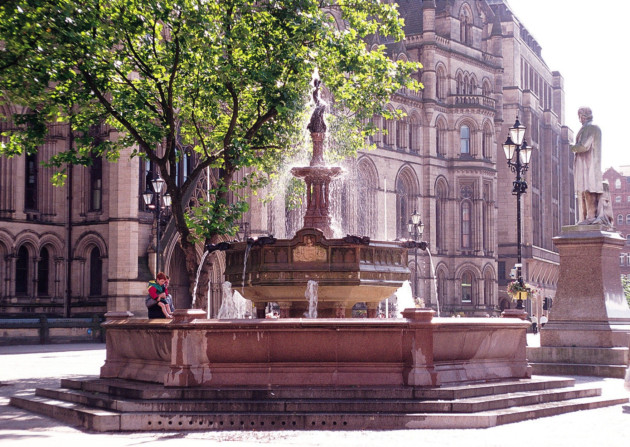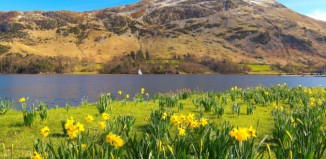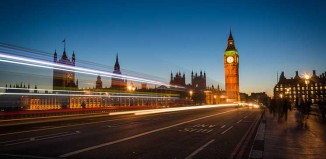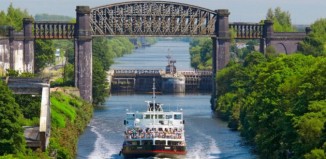Manchester City Walk
Meander through this metropolis to learn more about the history of Manchester and discover some of the city’s historic churches, prised buildings and fascinating museums. Find out where Europe’s largest newspaper printers were once located and which of the city’s churches is considered to be a ‘hidden gem’.
1. Start
Admire the architecture of Manchester’s cathedral at the heart of the city. Although the site gained cathedral status in 1847, there has been evidence of a church at the site since the 13th century.
2. National Football Museum
Head down the left-hand side of the cathedral and make your way across the Cathedral Gardens area to the striking Urbis building where you can step inside the museum to have a go at scoring a penalty, test your commentating skills and learn more about the history of the beautiful game. Head to the right of the Urbis building and you’ll soon see The Printworks on the corner of Corporation Street and Withy Grove.
3. The Printworks
The Printworks has changed name and hands several times over the years. Today, the building houses a hive of modern entertainment with restaurants, bars and a cinema, but in the 1920s it was the largest newspaper printing house in Europe, churning out 11 million copies a week.
4. The Royal Exchange Theatre
Head along Corporation Street and take the second right onto St. Mary’s Gate then the first left onto Exchange Street where you’ll find the theatre on your left. Founded in 1976 in the old Cotton Exchange, the theatre and has continued to be popular with visitors ever since. After suffering bomb damage in the 1996 IRA attack, a vast £32 million rebuild was carried out. The newly refurbished theatre reopened two years later and continues to hold contemporary and classic productions.
5. St. Ann’s Church
Carry on past the theatre, along St Ann’s Square and you’ll come to the church opposite the end of the road. Now over 300 years old, the church narrowly missed extensive damage during the Second World War and still holds a burnt-out incendiary bomb which fell onto its roof. The church was the second to be constructed in the city and its interior was remodelled by the architect of Manchester Town Hall, Alfred Waterhouse, in the 1880s.
6. Manchester Town Hall
Head left along St. Ann Street, taking the first right onto Cross Street then turn left onto Princess Street and you’ll find the Town Hall on your right. Designed in the Gothic style, the Town Hall was completed in 1877 after the old Town Hall in King Street had become too small for the ever expanding city. A competition was held to obtain a design for the new hall which was won by Alfred Waterhouse who created the £1 million design which is now a Grade I-listed building.
7. Central Library
Follow the road around the back of the Town Hall and you’ll find the circular central library. The foundations stone for the library was set down in May 1930 by Prime Minister Ramsay MacDonald and the building was later opened to the public by King George V in 1934 in front of thousands of people who had gathered to witness the opening of the largest public library in the country.
8. St. Mary’s, The Hidden Gem
Retrace your steps back along Princess Street then cross over onto John Dalton Street, taking a left onto Ridgefield, then left again on Mulberry Street where the church is located on the left. Originally opened in 1794, Father John Newton took charge of the church in 1869 and arranged for a sculptor to design the intricate carvings that have continued to grace the interior of the church, and which led to Bishop Vaughan to comment in 1872, “No matter on what side of the church you look, you behold a hidden gem.”
9. John Ryland’s Library
Head back the way you’ve come, turning left on John Dalton Street then left again on Deansgate where you’ll find the library on your right. The library was founded by Enriqueta Rylands in memory of her husband who was a successful business man and Manchester’s first multi millionaire. The library was opened to the public after 10 years of construction in 1900 and held 70,000 books and less than 100 manuscripts. Today, the library is part of The University of Manchester with over a quarter of a million printed volumes and over a million manuscripts.
10. Museum of Science and Industry
Carry on along Deansgate and turn right onto Liverpool Road just before its end where you’ll find the museum on your right. Although the museum first opened in 1969 it moved to its current location in 1983 after the council acquired the former Liverpool Road Station after its closure in 1975. The museum is now spread across five listed buildings and holds collections ranging from early textile machinery to X-ray equipment.
Information
The walk: A nice, level walk exploring the area around the heart of the city.
Parking: There are plenty of pay and display car parks dotted along the route of the walk including one opposite the cathedral at the start of the route.
Distance: Just under two miles
Time: Around 45 minutes with extra time needed to explore each attraction along the way.








